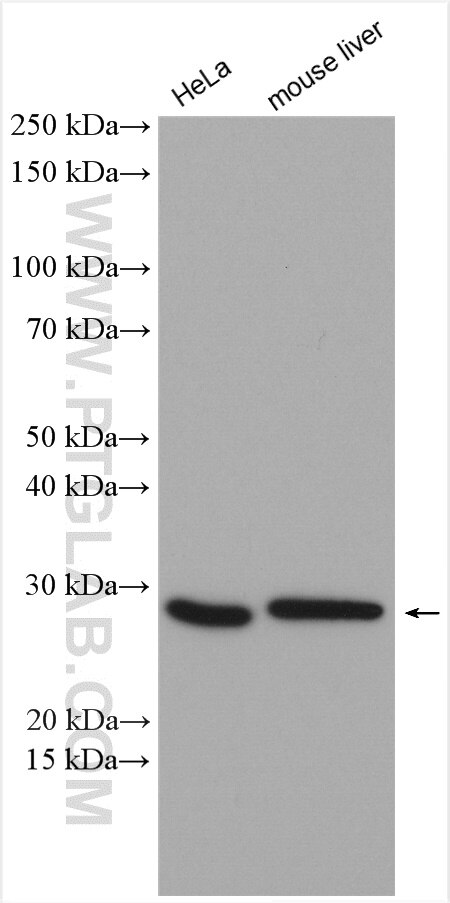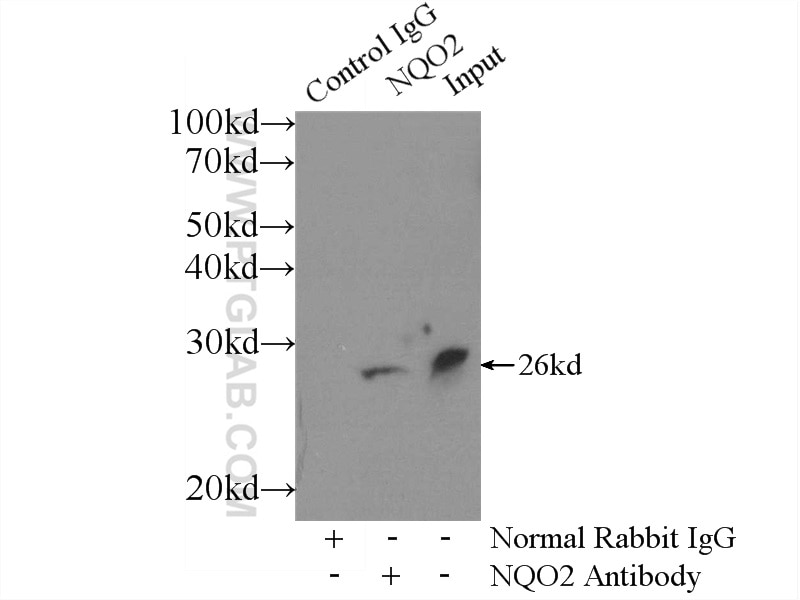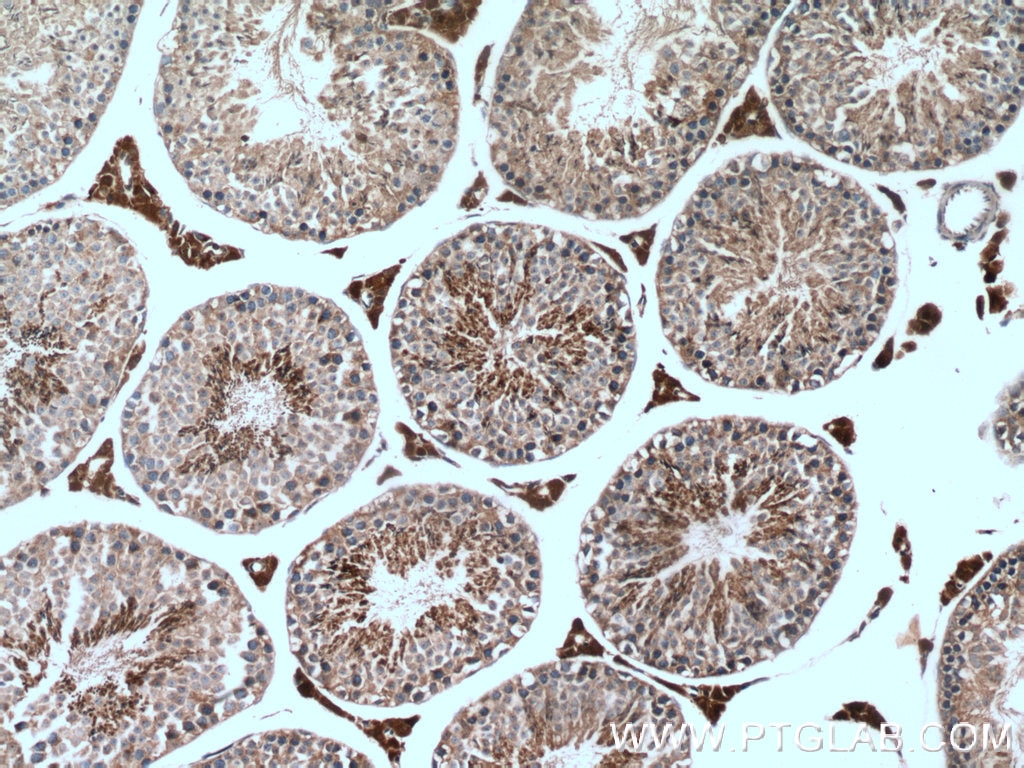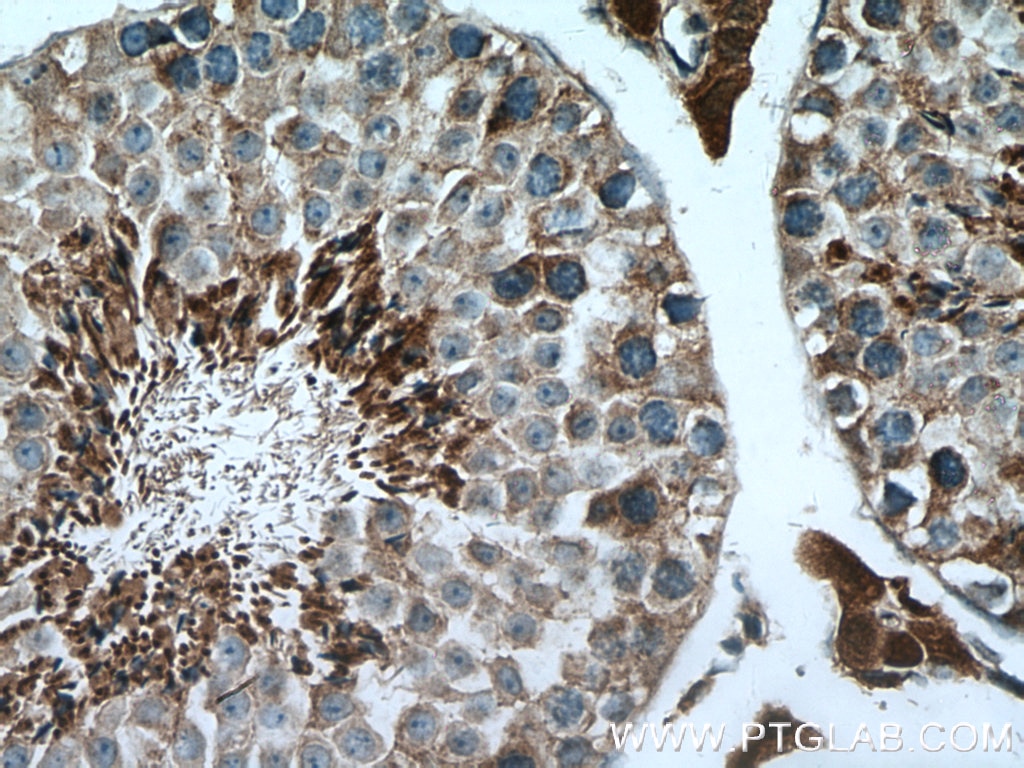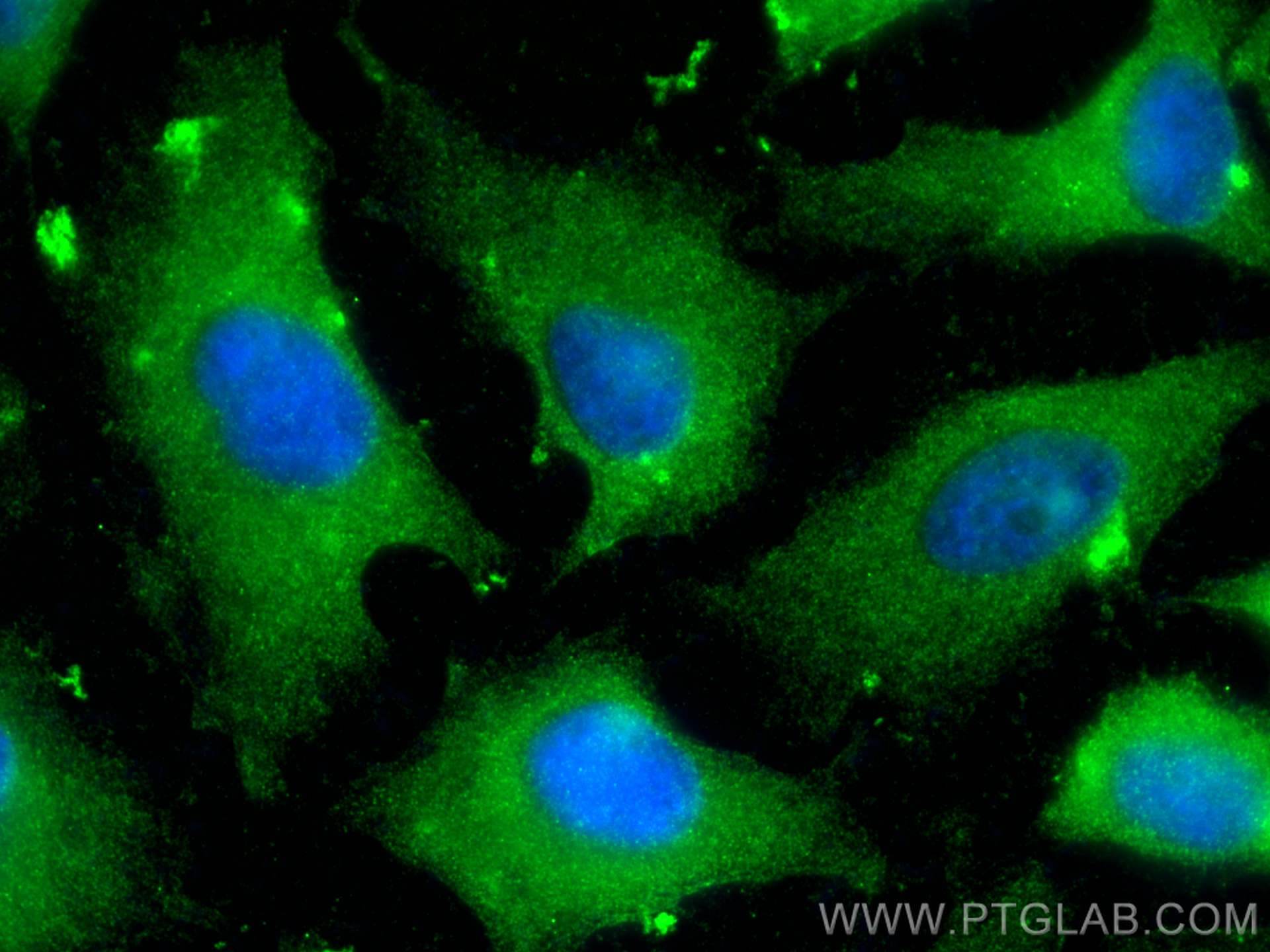Tested Applications
| Positive WB detected in | HeLa cells, mouse liver tissue |
| Positive IP detected in | HeLa cells |
| Positive IHC detected in | mouse testis tissue Note: suggested antigen retrieval with TE buffer pH 9.0; (*) Alternatively, antigen retrieval may be performed with citrate buffer pH 6.0 |
| Positive IF/ICC detected in | HeLa cells |
Recommended dilution
| Application | Dilution |
|---|---|
| Western Blot (WB) | WB : 1:1000-1:4000 |
| Immunoprecipitation (IP) | IP : 0.5-4.0 ug for 1.0-3.0 mg of total protein lysate |
| Immunohistochemistry (IHC) | IHC : 1:200-1:800 |
| Immunofluorescence (IF)/ICC | IF/ICC : 1:50-1:500 |
| It is recommended that this reagent should be titrated in each testing system to obtain optimal results. | |
| Sample-dependent, Check data in validation data gallery. | |
Published Applications
| KD/KO | See 2 publications below |
| WB | See 10 publications below |
| IHC | See 1 publications below |
Product Information
15767-1-AP targets NQO2 in WB, IHC, IF/ICC, IP, ELISA applications and shows reactivity with human, mouse samples.
| Tested Reactivity | human, mouse |
| Cited Reactivity | human, mouse, rat |
| Host / Isotype | Rabbit / IgG |
| Class | Polyclonal |
| Type | Antibody |
| Immunogen |
CatNo: Ag8403 Product name: Recombinant human NQO2 protein Source: e coli.-derived, PGEX-4T Tag: GST Domain: 1-231 aa of BC006096 Sequence: MAGKKVLIVYAHQEPKSFNGSLKNVAVDELSRQGCTVTVSDLYAMNFEPRATDKDITGTLSNPEVFNYGVETHEAYKQRSLASDITDEQKKVREADLVIFQFPLYWFSVPAILKGWMDRVLCQGFAFDIPGFYDSGLLQGKLALLSVTTGGTAEMYTKTGVNGDSRYFLWPLQHGTLHFCGFKVLAPQISFAPEIASEEERKGMVAAWSQRLQTIWKEEPIPCTAHWHFGQ Predict reactive species |
| Full Name | NAD(P)H dehydrogenase, quinone 2 |
| Calculated Molecular Weight | 231 aa, 26 kDa |
| Observed Molecular Weight | 26 kDa |
| GenBank Accession Number | BC006096 |
| Gene Symbol | NQO2 |
| Gene ID (NCBI) | 4835 |
| RRID | AB_2236213 |
| Conjugate | Unconjugated |
| Form | Liquid |
| Purification Method | Antigen affinity purification |
| UNIPROT ID | P16083 |
| Storage Buffer | PBS with 0.02% sodium azide and 50% glycerol, pH 7.3. |
| Storage Conditions | Store at -20°C. Stable for one year after shipment. Aliquoting is unnecessary for -20oC storage. 20ul sizes contain 0.1% BSA. |
Background Information
NQO2, also named as QR2 and NMOR2, belongs to the NAD(P)H dehydrogenase (quinone) family. It serves as a quinone reductase in connection with conjugation reactions of hydroquinones involved in detoxification pathways as well as in biosynthetic processes such as the vitamin K-dependent gamma-carboxylation of glutamate residues in prothrombin synthesis. The cytosolic quinone oxidoreductases NQO1 and NQO2 protect cells against oxidative stress by detoxifying quinones and preventing redox cycling. NQO1 and NQO2 are important endogenous factors in regulation of immune response and autoimmunity.
Protocols
| Product Specific Protocols | |
|---|---|
| IF protocol for NQO2 antibody 15767-1-AP | Download protocol |
| IHC protocol for NQO2 antibody 15767-1-AP | Download protocol |
| IP protocol for NQO2 antibody 15767-1-AP | Download protocol |
| WB protocol for NQO2 antibody 15767-1-AP | Download protocol |
| Standard Protocols | |
|---|---|
| Click here to view our Standard Protocols |
Publications
| Species | Application | Title |
|---|---|---|
Antioxidants (Basel) Apigenin and Luteolin Regulate Autophagy by Targeting NRH-Quinone Oxidoreductase 2 in Liver Cells. | ||
J Exp Clin Cancer Res PRX1 knockdown potentiates vitamin K3 toxicity in cancer cells: a potential new therapeutic perspective for an old drug. | ||
J Proteome Res Proteomic and Phosphoproteomic Analysis of Right Ventricular Hypertrophy in the Pulmonary Hypertension Rat Model | ||
Cell Physiol Biochem Downregulation of quinone reductase 2 attenuates vascular smooth muscle cells proliferation and neointimal formation in balloon injured rat carotid artery.
| ||
Life Sci Alliance Tanshinone functions as a coenzyme that confers gain of function of NQO1 to suppress ferroptosis | ||

